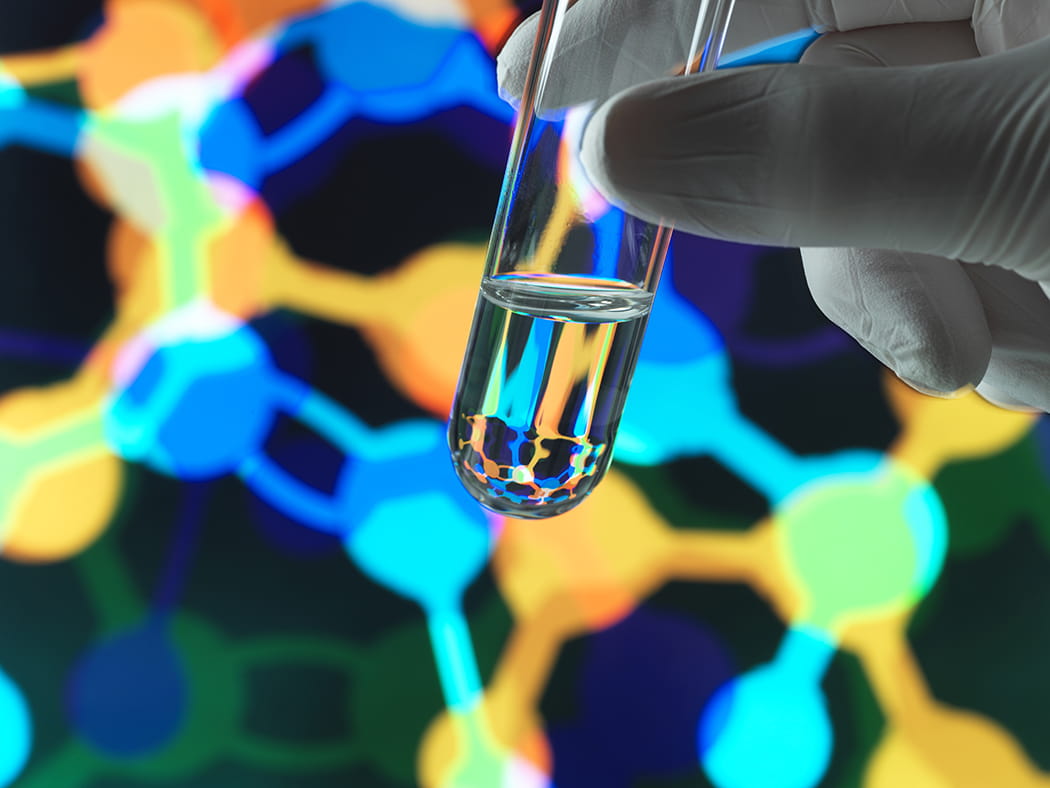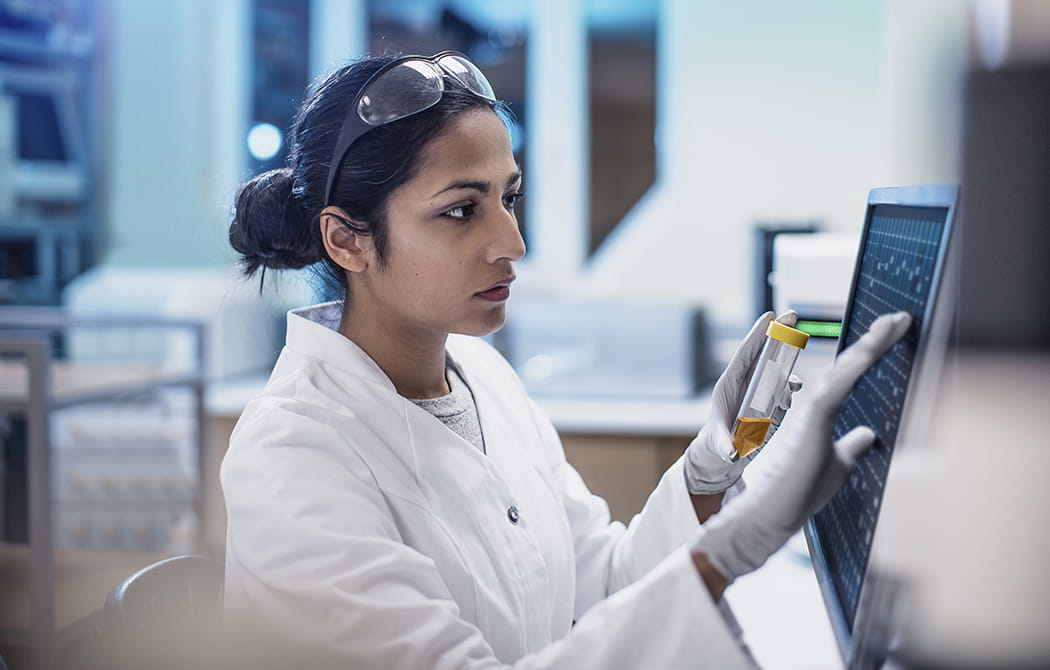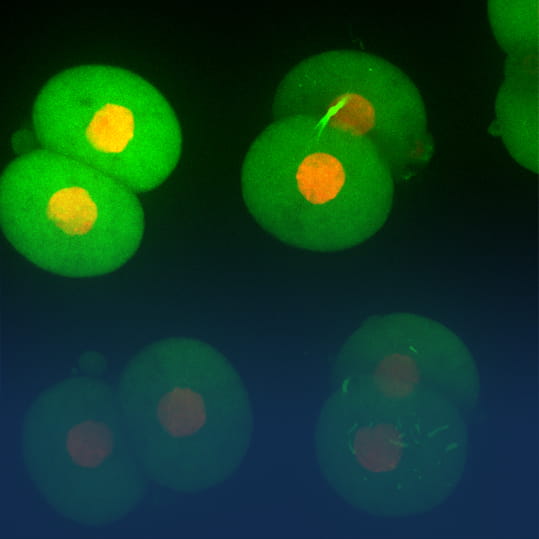
Technological Courage Delivers Unprecedented Biological Insight
The battle against infectious disease has continued throughout the course of human history. Viruses have proven extremely adaptable and elusive, evading countless medical advances such as vaccines and antiviral drugs. And today, the world is in the grip of its newest viral adversary, referred to as the novel coronavirus, or COVID-19. Efforts to develop a vaccine to conquer COVID-19 are ongoing. But actually preventing cells from being invaded, slowing or even stopping the proliferation of viruses and restoring or replacing infected cells with healthy ones will require some of the most advanced specialized knowledge and technologies the world has ever seen.
One’s Enemy Must Be Known to Be Defeated
― Decoding the reproductive mysteries of viruses is crucial in preventing them from spreading
Humankind has successfully developed a powerful arsenal of remedies to combat the spread of deadly bacteria. The bubonic plague, which killed approximately one-third of the entire population of Europe in the 14th century, would not occur today*1. Bacteria are living, single-celled organisms that can survive without a host, and are relatively easy to target and treat with antibiotics. But viruses can only live and reproduce by invading cells. This means that in order to suppress a virus, the cell it has taken over must be killed as well.
Viruses, which are 10 to 100 times smaller than bacteria, comprise one piece of genetic information—a genome, either DNA or RNA—and a protein shell to protect it*2, 3. They invade cells and, using the cell’s ribosomes, or “protein factories,” translate the virus’ genome into viral proteins instead of the proteins the cell needs in order to function properly.
The human body contains about 30 trillion cells of more than 200 types that work in concert, with cells of similar types coming together to form our organs and tissue*4. Abnormalities in cell function can lead to disease, so it’s imperative to understand why and how cell properties change.

“The impact of emerging infectious diseases on human health, effects on social and economic wellbeing of mankind can be enormous. If we can understand the essential steps of virus entry, infection, and replication, we have a better chance of controlling viral disease.”
-Dr. Yohei Yamauchi, Associate Professor in Virus Cell Biology, University of Bristol, UK
Interestingly, cells have their own character. Just as we learn more about people by watching them, continued observation of cells can reveal traits of their character. This can help us to determine when a cell will undergo changes due to some external influence. For instance, in the case of cancer, it is possible to gauge the timing of a cell becoming cancerous. To do this effectively, though, cancerous tissue dynamics need to be analyzed on the individual cell level.
Conventional wisdom holds that the metastasis of cancer begins when an individual cell acquires the ability to metastasize. But how do some cells gain this ability, while others don’t? And how can we identify them at an early stage and stop them? The answer may lie in an in-depth analysis of the pathological mechanisms of individual cells, and how they communicate with nearby cells.

Epoch-Making Change Is in the Offing
― Yokogawa’s unquenchable thirst for technological breakthroughs is yielding results that are nothing short of amazing
For more than three decades, Yokogawa has leveraged its mastery of measurement, control, and information technologies to develop equipment and systems that someday would actually enable the analysis of the inside of individual living cells. What has given the company an advantage, and has propelled it to the verge of historic achievement, is its game-changing dual spinning disk confocal technology, first commercialized in 1996.
The combination of this technology and Yokogawa’s CellPathfinder software, which features a sophisticated deep learning function, captures position and morphological information—aspects such as cell shape, form, structure, and size—from a small sample of cells. 3D imaging, which features low photobleaching and low phototoxicity, makes it possible to accurately acquire and analyze cell images and clarify the target cell and cell site. In addition, even label-free images—which are difficult to analyze due to limitations with bright field analysis—can be analyzed quickly and with high recognition accuracy.
In addition to advanced imaging technology, Yokogawa is also developing fully automated cell-harvesting equipment. Its soon-to-be-released cell sampling device is equipped with a micropipette, a tube measuring mere micrometers in diameter. It is used to collect not only entire cells, but cell components as well. Until now, this process had to be done by hand, with the work requiring at least 30 minutes per cell, even for veteran researchers. The ability to harvest cells and cell components automatically will contribute greatly to accelerating drug discovery research.
Previously, if scientists wanted to test the reaction of cells to a virus, they would have to randomly “sprinkle” the virus over a sample of cells in a culture medium. This made it very difficult to know precisely which cells had been infected. With Yokogawa’s SU10 Single Cellome Unit, however, drugs and other substances can be automatically injected into individual cells using a nanopipette, resulting in high precision and high efficiency. This can also be used to inject antiviral drugs and evaluate their efficacy. And, used to inject antibody genes, it may also lead to the creation of antibody-generating cells.
These and other leading-edge technologies will open the door to experiments that could not have been conducted in the past, and will prove tremendously helpful in life science applications such as new drug discovery research and identifying the causes of disease.
“Only those who will risk going too far can possibly find out how far one can go.”
-T.S. Eliot, American/British poet, preface to Transit of Venus: Poems (by Harry Crosby, 1931)
These technologies actually support researchers in the US and the UK, which are on the front lines of novel coronavirus research. They are used in observing the process of becoming infected by the virus and how human cells protect themselves from damage. They are also useful in researching the lifecycle of the virus, and in discovering and developing drugs believed to be effective in combatting it.
The world today is shrouded in a massive veil of uncertainty. This crisis has impacted industry; it has transformed daily life; and it has shaken society to its foundation. People of the world have been subjected to broad-ranging restrictions. Things that had been taken for granted are now lamented as lost freedoms. The world has been forced to change in unprecedented ways, which has brought about changes in our values and behavioral awareness.
Since Yokogawa’s founding more than a century ago, it has viewed contributing to society as its corporate mission; its very purpose for existence. Its superior technological capabilities and insight have enabled it to achieve innovations vital to society. And while the current conditions have forced businesses to re-examine their own reason for being, Yokogawa finds itself in an advantageous position, having been dedicated for many years to applying its technical expertise to resolving social issues.
Yokogawa continues to aggressively support the tireless efforts of researchers, convinced that bringing the full might of its technological prowess to bear in ensuring future generations enjoy good health and prosperity is its purpose in society. And its powerful motivation and ability to execute remain unchanged as it looks forward in anticipation of the solutions the world will require to conquer challenges new eras or the environment may present.
References
*1 : “Plague was one of history’s deadliest diseases — then we found a cure”; National Geographic Online, July 2020
*2 : DNA = deoxyribonucleic acid.
*3 : RNA = ribonucleic acid.
*4 : “What Are Humans Made Of?”; Earth.com, August 2019



